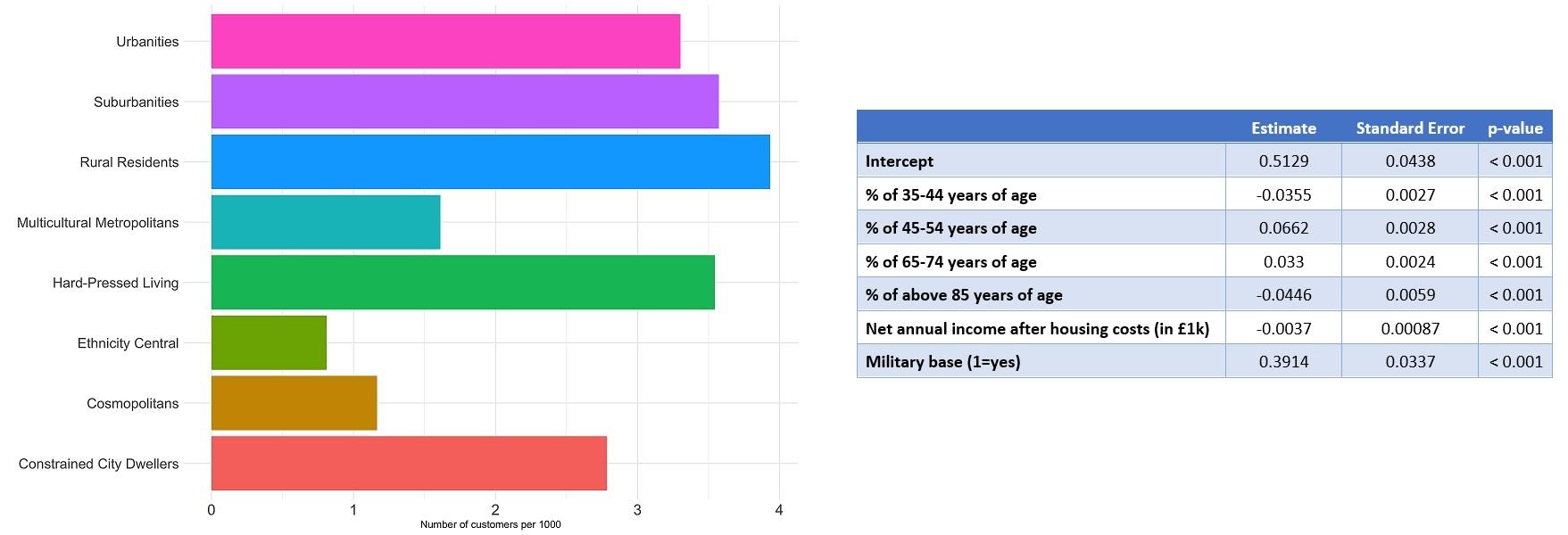You are here
Spatio-temporal analysis of Charity Online Store sales data using geodemographics

Ph.D. candidate Jakub Wyszomierski and online charity retailer Help for Heroes Trading Ltd.: Spatio-temporal analysis of Charity Online Store sales data using geodemographics.
Using open data alongside transactions data, the placement explored online purchasing behaviour of “Help for Heroes” customers. The data provider was interested to learn of any spatial and temporal variation in sales, and thus improve understanding of the socio-demographic factors that might impact upon them.

Total number of activities per week.
The results of the placement indicated that while the organisation has seen slight reductions in the number of transactions over the years, there is also geographic variation in patronage across the country. Furthermore, it was found that the likelihood of being a customer varies between age groups. Moreover, the analysis indicated that residents of less affluent areas in proximity to military bases have higher rates of customers. Finally, the findings suggest that while urban residents are the most numerous customer category, rates of patronage are highest amongst rural residents.

Left: Location of military bases and closed physical stores over the total number of customers per 1,000. Right: Changes in total number of customers per 1,000 between 2016 and 2020 at MSOA level.
Apart from anonymised transaction data provided by the charity, the project used open datasets from the Office for National Statistics including the 2011 Output Area Classification (developed at and available from CDRC), the 2011 Rural/Urban Classification, data on net annual household incomes and Mid-Year Population Estimates. The project also utilised information on the locations of closed physical retail stores and locations of military bases across England & Wales.

Left: Total number of customers per 1,000 people for each 2011 OAC group. Right: Regression model outputs, showing the impact of the number of customers per 1,000 people for a change in 1% of each age group.
Analysis of transaction data made it possible to gain understanding of changes in sales over time, as well as to understand the socio-demographic background of customers. Further, spatial analysis enabled the examination of the geographic patterning of sales. The potential influence of military bases upon sales was also considered but was not apparent. Lastly, the research developed multiple regression analysis to test the combined effects of age group, net annual income and proximity to army bases upon numbers of customers.
Issues with data confidentiality arose because the data were provided at a very fine spatial granularity. To ensure non-disclosure of the results, the data were aggregated to a higher geographical level. Before exporting the results, cells with small counts were suppressed.
Reflecting on the placement, Jakub Wyszomierski said: “The experience of working on this project has been highly beneficial for me. It has provided a valuable understanding of the application of geodemographics in the private sector, which is a central aspect of my PhD research. The conducted work, as well as feedback from the data provider, has developed my understanding of the desirable outcome and utility of my research. I think that this project constitutes a perfect example of the empirical applicability of the ideas underpinning my thesis.”
Tanya Ingelton, Head of Trading at Help for Heroes Trading Lyd. Said: “It has been very useful to work on this project with the analyst – to be able to discuss the data at a few stages and influence the research based on initial results. The results will give us a clear understanding of our customer base for better targeting for marketing purposes. We have some definitive answers on the influence of retail stores and military bases on customers and we can see the change over a five-year period.”